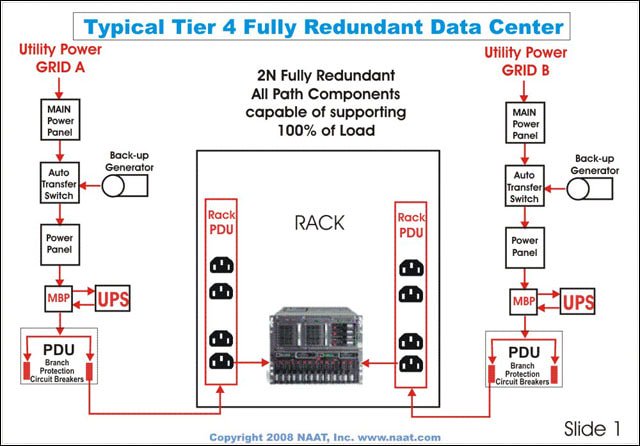TIA 942 Standard and the Tier

From this need to interconnect professionals both for the maintenance of these Data Centers as well as to facilitate to manufacturers the creation of all the necessary elements, the TIA 942 standard was born in 2005 approved by ANSITIA (American National Standards Institue - Telecommunications Industry Association) facilitating the standardization of these centers providing recommendations and guidelines for the creation and subsequent maintenance of these centers.
According to the standard, any Data Center must be composed of four subsystems:
- Telecommunications: Backbone, active elements, racks, patch panels, horizontal wiring, patch cords, redundant elements, etc.
- Architecture: Flame retardant protection and NFPA 75 requirements, location and construction, access control, CCTV, NOC (Operating Center), etc.
- Electrical system: Number of accesses, loads, supply redundancy, generators, monitoring, transfer systems, EPO (Emergency Power Off) and grounding.
- Mechanical system: Air conditioning and refrigeration, pipes, capacitor banks, HVAC, detection of fires by clean agent and by aspiration and detection of liquids.
In addition to these subsystems, all data centers governed by the TIA 942 standard must have the following functional areas:
- Main distribution area or areas
- Horizontal distribution area or areas
- Distribution equipment area
- Horizontal wiring and backbone
In the second half of 2017, as every 5 years, the standard was updated with revision B incorporating changes such as, among others:
- Add fabric solutions for the Data Center
- MPO connectors of 16 and 32 fibers
- Allows the use of category 8 twisted pair
- Add OM5 (broadband multimode fiber)
The TIA 942 standard also incorporates the classification of the Data Center, knowing this classification as Tier, which are indicators that help us to know the capabilities and facilities of the Data Center
These Tier are composed, at present, of four different levels that mainly mark us the availability of these, and the maximum times that these data centers can be inoperative during a year. We could obtain the following summary table about this classification:
| TIER | %Avail | %Stop | Max Time of Stop |
|---|---|---|---|
| I | 99,67% | 0,33% | 22,82h |
| II | 99,74% | 0,25% | 22,68h |
| III | 99,982% | 0,02% | 1,57h |
| IV | 100% | 0,01% | 0,52h |
The higher the Tier granted, the more capabilities they have to have in addition to their own availability. In the case of the highest applicable standard nowadays, Tier IV, we can highlight other characteristics such as:
- Multiple points of access to the current
- Multiple cooling routes
- Redundant components complying: (2 (N + 1)) - 2 UPS each with redundancy (N + 1)
- Protection from critical damages in front of any unexpected stop.
Currently, they are also trying to incorporate a new Tier V category that would further improve the capabilities and requirements of these Data centers.
